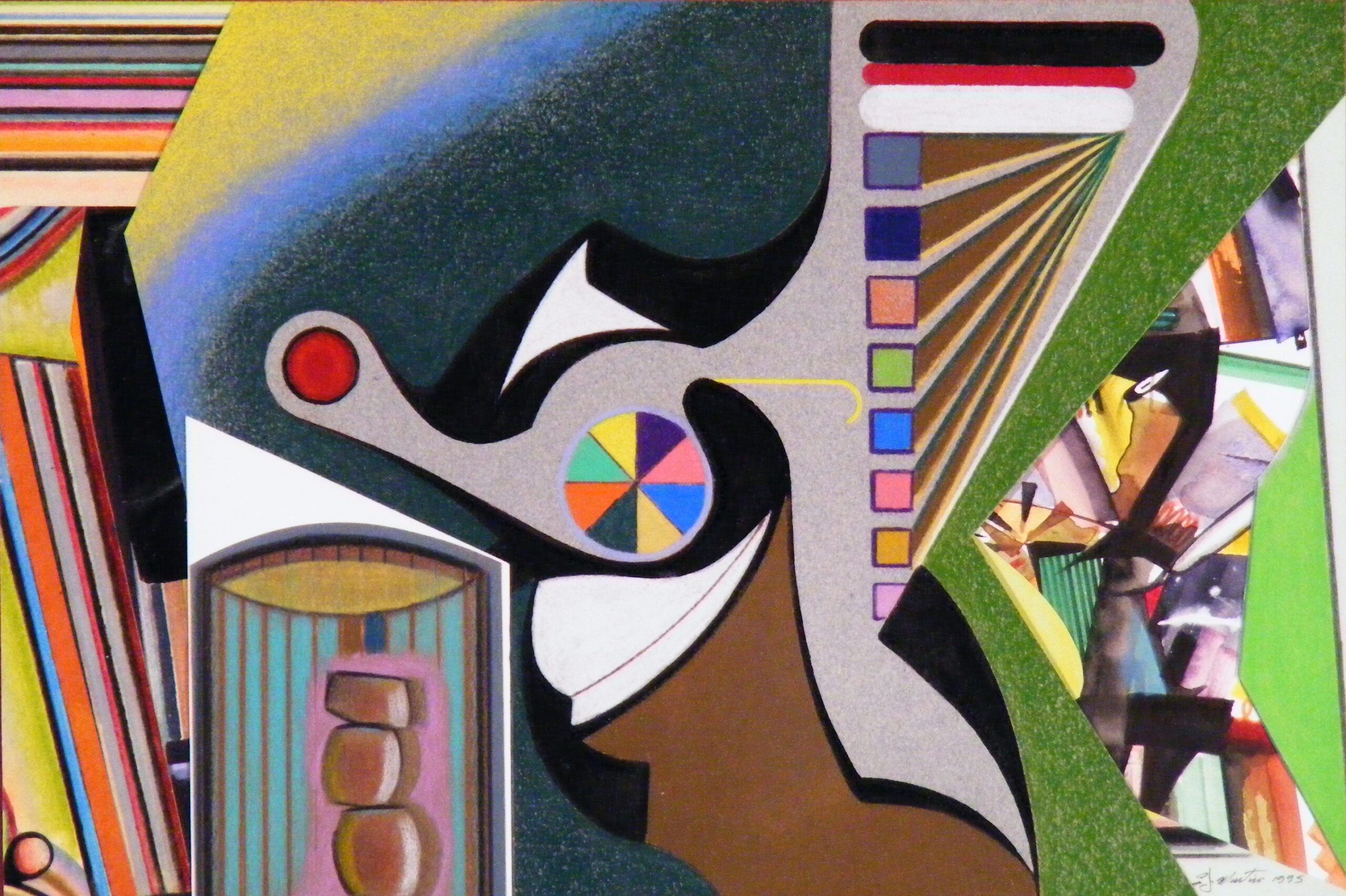
On Exhibit: ‘The Creative Act’ at the LSU Museum of Art
You may have seen hints of Eugene Martin in the LSU Museum of Art before—a multicolored collage here, stacks of geometric shapes there. The canvases would come and go from display through the years, 31 pieces of the D.C.-born artist’s work having been donated by his wife to the museum after his passing in 2005. Perhaps you remember taking a second glance before turning a corner into the next exhibition room; was that a face you saw staring back from the painting? The beak of a bird? Or something else wholly imaginary? Now, for the first time, viewers can journey through the abstractions at their leisure, thanks to curator Olivia Peltier gathering 18 of Martin’s pieces—some never before seen by the public—in a showcase of his career from the 1960s to the 1990s.
Born in 1938, fresh from the era of artists like Pablo Picasso and Paul Klee, Martin eventually trained at the Corcoran School of the Arts and Design not to succumb to previous decades’ masters of the abstract form, but to pursue an untethered, individualistic style in his creations.
“There are obviously some artistic influences that we can see in Martin’s work, but he was all about creating from within and doing only what pleased him, rather than answering to the style of the time or bending to what might sell better,” says Peltier, who notes the particular impact of Martin’s presence in the field as an African American artist. “Especially at the time that Martin was growing up as an artist in the early 1960s, the art world wanted African American artists to make narrative works that commented on the times and their personal experiences. Making abstract art was somewhat a form of protest against what the white art world demanded of Black artists.”
Whether through black-and-white inked drawings, acrylic paintings on board, or paper collages, Martin—who lived the last 10 years of his life in Lafayette—invites viewers to journey through shapes and colors, which is why the museum has also crafted an interactive component for the exhibit. Look out for the large circle on a blank wall where visitors can find pieces and scraps of paper—even images from Martin’s own art—to create an ever-changing collage of their own.
“This exhibition is full of little worlds to dive into, and each work offers something different for each viewer,” says Peltier. “‘The Creative Act’ presents an unexpected form of abstraction, full of humor and whimsy, but always something deeper at heart.”











